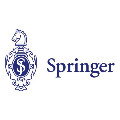Future wireless networks must serve dense mobile networks with high data rates, keeping energy requirements to a possible minimum. The small cell-based network architecture and device-to-device (D2D) communication are already being considered part of 5G networks and beyond. In such environments, network coding (NC) can be employed to achieve both higher throughput and energy efficiency. However, NC-enabled systems need to address security challenges specific to NC, such as pollution attacks. All integrity schemes against pollution attacks generally require proper key distribution and management to ensure security in a mobile environment. Additionally, the mobility requirements in small cell environments are more challenging and demanding in terms of signaling overhead. This paper proposes a blockchain-assisted key distribution protocol tailored for MAC-based integrity schemes, which combined with an uplink reference signal (UL RS) handover mechanism, enables energy efficient secure NC. The performance analysis of the protocol during handover scenarios indicates its suitability for ensuring high level of security against pollution attacks in dense small cell environments with multiple adversaries being present. Furthermore, the proposed scheme achieves lower bandwidth and signaling overhead during handover compared to legacy schemes and the signaling cost reduces significantly as the communication progresses, thus enhancing the network's cumulative energy efficiency.
翻译:未来无线网络必须服务于数据率高的密集移动网络,将能源需求保持在尽可能最低的水平;小细胞网络架构和装置到装置的通信已经被视为5G网络及其他网络的一部分;在这种环境中,可以使用网络编码(NC)实现更高的输送量和能源效率;然而,NC辅助系统需要应对NC特有的安全挑战,如污染袭击;所有防止污染袭击的完整计划一般都需要适当的关键分布和管理,以确保移动环境中的安全;此外,小型细胞环境中的流动要求在信号间接处理方面更具挑战性,要求更高;本文提议为基于MAC的完整计划专门设计一个块链辅助关键分配协议,结合一个上链参考信号(ULRS)移交机制,使NC能够实现能源效率;在移交设想期间对协议进行绩效分析表明,它适宜确保高水平的安全,防止在密集的小细胞环境中发生污染袭击,同时有多重对手;此外,拟议的计划在与遗留计划交接期间实现的带宽度和信号间接处理量比低,而且信号成本随着通信进展的累积而大大降低。





